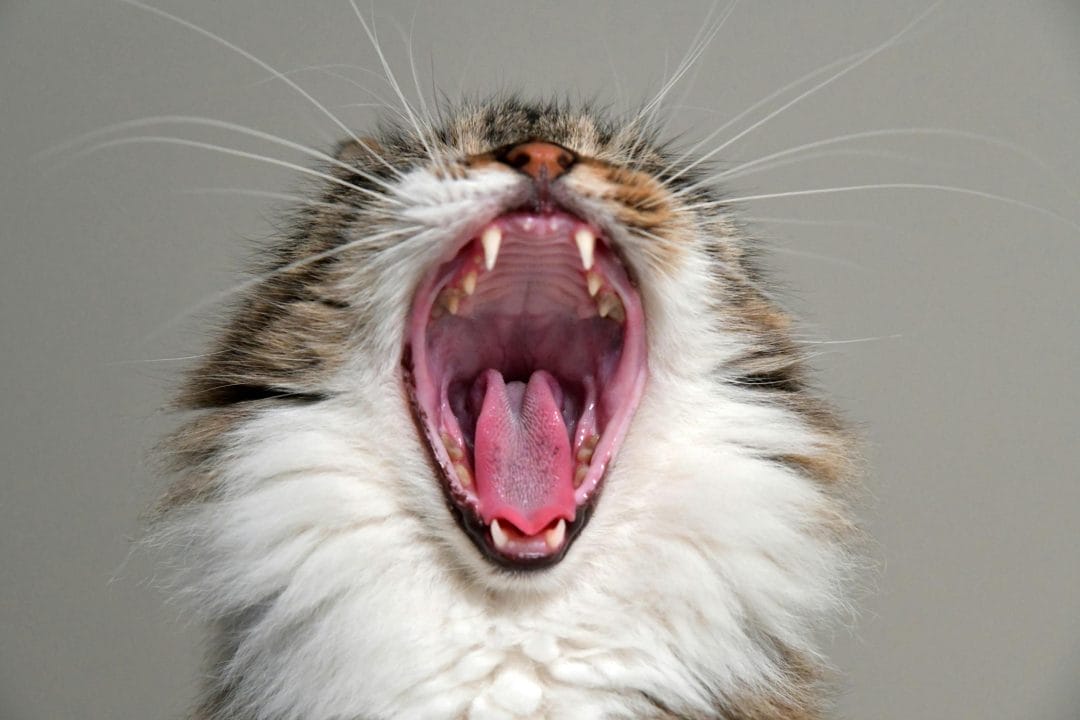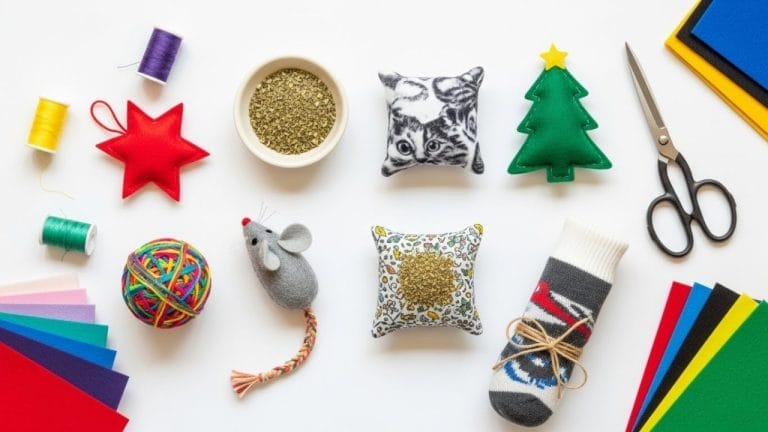8 Things You Should NEVER Do to Your Cat
Look, we all think we’re giving our cats the best life possible. We buy them the fancy toys, give them treats, and let them rule our homes like the tiny overlords they are. But here’s the thing – some of what we think is helping is actually hurting our furry friends.
I’m going to be real with you: even the most devoted cat parents make mistakes. I’ve made them too. But after digging into the latest veterinary research and talking to experts, I found out that some common cat care practices are straight-up dangerous. Let’s talk about what you need to stop doing right now.
Never Use a Spray Bottle to “Discipline” Your Cat
This one’s going to be controversial because everyone and their mother swears by the spray bottle method.
But here’s what actually happens when you spray your cat: they don’t connect the water with their behavior. They connect the water with YOU. According to veterinary behaviorists, cats learn to fear their owners, not the behavior you’re trying to stop.
Think about it from their perspective. Your cat jumps on the counter while you’re at work – nothing happens. They jump on the counter when you’re home – BAM, surprise water attack. They’re not learning that counters are off-limits. They’re learning that you’re unpredictable and scary.
The damage goes deeper than you think. Cats that get sprayed regularly become anxious, stressed, and sometimes even aggressive.
They start avoiding you even when they’re not doing anything wrong. Some cats get so stressed they develop OTHER behavior problems – like peeing outside the litter box or scratching furniture even more.
What to Do Instead
Use positive reinforcement. When your cat uses their scratching post instead of your couch? Treat time. When they stay off the counter? Praise and play. Give them better options and reward the behavior you want to see.
By the way, if you're into Informative stuff, you’ll wanna check this one out: How to Stop Cats from Climbing Christmas Trees
Never Give Your Cat Milk (Yes, Really)
I know, I know. This one hurts. We’ve all seen those adorable pictures of cats lapping up saucers of milk.
But here’s the truth bomb: most adult cats are lactose intolerant. Like, actually lactose intolerant. Not “it might upset their tummy a little” intolerant – we’re talking diarrhea, vomiting, gas, and genuine digestive distress.
Here’s why: Kittens produce an enzyme called lactase that helps them digest their mother’s milk. But once they’re weaned (usually around 8 weeks old), that enzyme production drops off a cliff. By the time your cat is a year old, most stop producing lactase entirely.
A 2019 clinical study found that most adult cats can’t digest lactose properly. When they drink milk, the undigested lactose pulls water into their intestines and ferments, causing all kinds of digestive chaos.
Plus, a saucer of milk for a cat is like eating an entire 12-inch pizza in one sitting for humans – way too many calories.
What About Lactose-Free Milk?
It’s safer, but still unnecessary. Cats are carnivores – they get everything they need from meat-based food and water. If you want to give them a treat, save the money on special cat milk and invest in quality cat treats instead.
Oh, and speaking of Informative, here’s another one you might like: How to Keep Peace in a Multi-Cat Home (Stress-Free Tips!)
Never Use Essential Oils Around Your Cat
This is where things get scary, and I need you to pay close attention.
Essential oils can literally kill your cat. Not “might make them sick” – KILL. We’re talking liver failure, seizures, death. Even if you’re just diffusing them in the air.
Cats lack specific liver enzymes (UGT enzymes) that humans have. This means they can’t break down and eliminate the compounds in essential oils. These toxins build up in their bloodstream and liver, causing serious damage.
The worst offenders include tea tree oil, peppermint, citrus oils, lavender, eucalyptus, cinnamon, wintergreen, pine, and pennyroyal. But honestly? Skip ALL essential oils if you have cats.
The Three Ways Oils Poison Cats
Through their skin: If you apply oils to your cat’s fur or they rub against surfaces you’ve cleaned with oils, it absorbs through their skin and they lick it off while grooming.
By ingestion: A diffuser tips over, they walk through spilled oil, lick their paws – boom, poisoned.
By inhalation: Yes, even breathing in diffused oils can cause respiratory distress and toxic buildup. Cats with asthma? This is especially dangerous.
Symptoms include drooling, vomiting, tremors, difficulty breathing, low body temperature, and collapse. If you see ANY of these signs, get to a vet immediately.
Also, just throwing this in—this Informative post is a fun read too: 10 Heartwarming Signs Your Cat Really Loves You
Never Let Your Cat Have Access to Toxic Plants
Your beautiful houseplants might be a death trap for your cat.
Lilies are the big one.
All parts of true lilies – petals, leaves, pollen, even the water in the vase – can cause complete kidney failure in cats. We’re talking about a tiny nibble causing organ failure. Easter lilies, tiger lilies, Asiatic lilies – they’re all deadly.
But it’s not just lilies. Tons of common plants are toxic: daffodils, azaleas, tulips, sago palms, oleander, autumn crocus, chrysanthemums, English ivy, pothos, peace lilies, philodendron, aloe, begonias, and cyclamen.
Even plants that aren’t deadly can cause serious problems like vomiting, diarrhea, mouth burns, and excessive drooling.
The Sneaky Part
Cats don’t even have to eat the plant directly. Pollen can land on their fur, and when they groom themselves, they ingest it. This is why even lilies in a vase on your table are dangerous.
Before bringing ANY plant into your home, check the ASPCA’s toxic plant list. And if you already have plants, either get rid of the toxic ones or put them in rooms your cat can never access.
Never Declaw Your Cat (It’s Literally Amputation)
Let’s be crystal clear about what declawing actually is: it’s not like trimming nails. It’s amputating the last bone of each toe.
Imagine someone cutting off the tips of your fingers at the last knuckle. That’s what we’re doing to cats when we declaw them. It’s not removing the nail – it’s removing part of their toes.
The consequences are brutal: chronic pain, difficulty walking, arthritis, litter box avoidance (because it hurts to dig), and behavioral problems. Declawed cats often become more aggressive because they feel defenseless without their primary defense mechanism. They’re more likely to bite because they can’t scratch.
But My Furniture!
I get it. Scratching destroys stuff. But scratching is a normal, natural, necessary behavior for cats. They need to do it to stretch, mark territory, and maintain their claws.
The solution? Give them appropriate scratching options. Get tall, sturdy scratching posts (they need to be able to fully stretch).
Try different textures – sisal rope, corrugated cardboard, carpet. Place them strategically in front of furniture they target. Trim their nails regularly. Use positive reinforcement when they use their posts.
Your couch is replaceable. Your cat’s quality of life isn’t.
Never Pick Up Your Cat by the Scruff
You’ve seen mother cats carry their kittens by the scruff, so it must be fine, right?
Wrong. Mother cats only scruff tiny, lightweight kittens, and they stop as soon as the kittens get bigger. Adult cats are way too heavy to be lifted this way safely.
When you scruff an adult cat, you’re causing pain and putting stress on their neck, spine, and shoulders. Their full body weight is hanging from the skin and muscle at the back of their neck – it’s not designed to support that.
Plus, scruffing is threatening and scary for cats. It triggers fear and submission, not obedience or learning. You’re damaging your relationship with your cat every time you do it.
The Right Way to Pick Up Your Cat
Support their weight properly. Put one hand under their chest behind their front legs and the other hand supporting their back legs and rear end. Lift them gently and hold them close to your body so they feel secure.
Some cats don’t like being picked up at all, and that’s okay. Respect their boundaries.
Never Leave Your Cat Bored Without Mental Stimulation
This is the mistake I see most often, and it leads to SO many behavior problems.
Bored cats become destructive cats. They scratch furniture, knock things off counters, attack your ankles, meow excessively, and develop anxiety. It’s not that they’re being bad – they’re going stir-crazy.
Think about it: in the wild, cats spend hours hunting, exploring, and engaging with their environment. Now we stick them in apartments with nothing to do all day. Their brains need work.
How to Fix This
Play with your cat every single day. Use wand toys that mimic prey movement. Get puzzle feeders so they have to “hunt” for their food. Rotate toys so they stay interesting. Give them vertical spaces like cat trees. Hide treats around the house. Even just 15 minutes of active play daily makes a huge difference.
Interactive play isn’t optional – it’s essential for their mental and physical health. Cats who get enough stimulation are calmer, happier, and way less destructive.
Never Ignore Litter Box Problems or Punish Your Cat for Them
Your cat is peeing outside the litter box. Your immediate thought might be “they’re mad at me” or “they’re being spiteful.”
Stop right there. Cats don’t think that way. They don’t pee on your bed out of revenge. They don’t have a concept of spite. If they’re eliminating outside the box, something is wrong.
It could be a medical issue – urinary tract infections, kidney problems, diabetes, arthritis that makes getting in the box painful. It could be stress – changes in the home, a new pet, construction noise.
It could be the litter box setup – too few boxes, not clean enough, wrong location, covered box they don’t like, litter type they hate.
The rule is simple: one litter box per cat, plus one extra. So if you have two cats, you need three boxes. Clean them daily. Scoop solid waste at least once a day, completely change litter weekly. Never use scented litter or ammonia-based cleaners.
Never, Ever Punish
Punishing a cat for litter box accidents makes the problem worse. They associate the punishment with YOU, not with the behavior. They get more stressed. More stress = more accidents. It’s a terrible cycle.
First, take them to the vet to rule out medical issues. Then address environmental factors. Be patient. This is fixable, but not through punishment.
The Bottom Line: Your Cat Deserves Better
Here’s what kills me about all of this: most people make these mistakes because they love their cats and genuinely think they’re doing the right thing.
Nobody wants to hurt their cat. But good intentions don’t protect our pets from harm. The spray bottle feels like harmless discipline. Milk seems like a sweet treat. Essential oils smell nice. Declawing seems like a simple solution to a frustrating problem.
But now you know better. And when you know better, you do better.
Your cat can’t read ingredient labels or research whether plants are toxic. They can’t tell you when the essential oil diffuser is making them sick. They can’t explain that the spray bottle is giving them anxiety. They depend on you to protect them from dangers they don’t understand.
So here’s my challenge to you: Pick one thing from this list that you’re doing wrong and fix it this week. Stop using the spray bottle. Remove that toxic plant. Switch off the diffuser. Schedule that vet appointment to check out the litter box issues.
Your cat won’t thank you in words. But they’ll show you in purrs, headbutts, and that slow blink that says “I trust you.” And honestly? That’s worth more than any fancy toy or treat you could ever buy them.
Because cats deserve owners who care enough to learn what actually helps versus what actually hurts. And you just became one of them.







